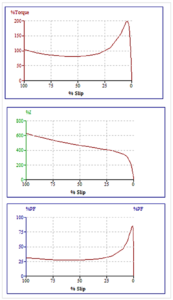An electric motor is an electromechanical device that converts electrical energy into mechanical energy. Electric motors operate on the principle of electromagnetic induction through the interaction of magnetic fields and current-carrying conductors to create rotational force. Electric motors are important and indispensable equipment in production and business activities.
Starting motors, especially large motors in the system, can cause disturbances, seriously affecting other motors and any loads connected in the same system, as well as busbars far from the motor starting point. Improper starting of a motor can cause damage to the motor, power quality problems (such as voltage drops), or even power interruptions. The motor must be provided with enough torque to accelerate within its rated thermal limits. If the accelerating torque generated by the motor is not sufficient to bring the machine to operating speed within the allowed time, the motor may have rotor or stator damage.
Conducting research on motor starting analysis helps power system operators control the effects of motor operation and find solutions to prevent, improve and select suitable motors to increase the life and performance of the motors.
♦ The effects and impacts of the motor starting process on the electrical system include:
– Voltage fluctuations, voltage drops
– Sudden high current increases
– Power factor reduction
– Equipment overload
– Misoperation of the protection system
♦ Motor starting analysis studies are performed to determine the voltage, current, and starting time involved when starting a large motor or a group of motors, either sequentially or simultaneously. Motor starting studies are performed to help ensure that:
– The motor will start with an acceptable/adequate voltage drop and start successfully under operating conditions.
– The motor power supply is of adequate power and the voltage drop at the time of starting will not disrupt other loads.
– Accurately assess the motor/load speed torque characteristics and acceleration time and determine that the motor will accelerate within an acceptable starting time.
– Accurately assess the thermal damage characteristics of the motor
– The motor will not abruptly disconnect during the starting process.
– In cases where direct-on-line (DOL) starting is not possible, the type and size of starter/drive required to start the motor must be known.
– Determine the largest motor size that can start with a given generator power rating or generator power rating for a given load and the largest motor size.
– Motor protection devices are selected with the correct size/setting parameters.
– Cable size selection.
♦ Applicable standards:
– IEEE 3002.7: Motor Starting Analysis Standard.
– IEEE 399: Standard for Industrial and Commercial Electrical System Analysis.
– IEEE 141: Standard for Distribution Electrical System Analysis.
– Motor Manufacturer Standards

